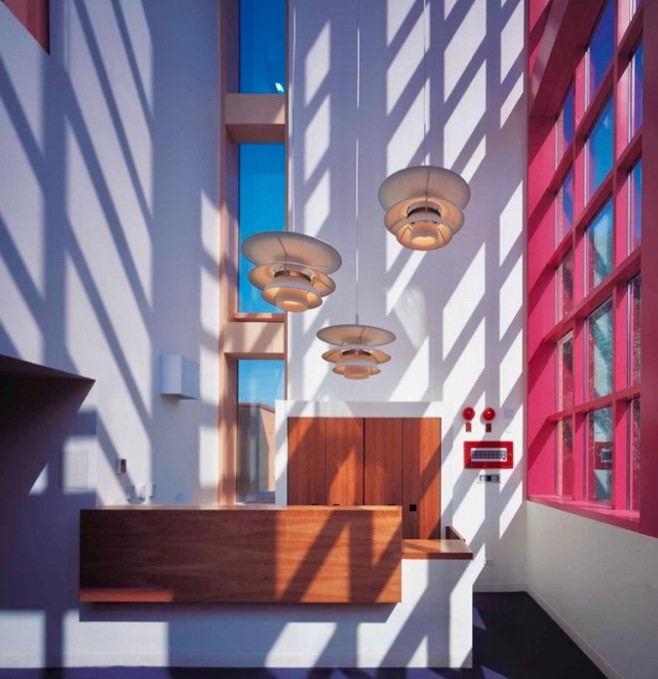By Brent Hoffmann, Class of 2005

In 2001, students accustomed to the gray, neo-Gothic buildings of the University of Chicago were agog over the new dormitories designed by Mexican architect Ricardo Legorreta: “Who came up with those colors? Are red and yellow compatible with the gray of our campus?” Pop-culture students dubbed the orange brick walls and purple entrance of purple, yellow, and pink as “Barney, Big Bird, and Barbie.”
The eight Max Palevsky Residential Commons dorms were the work of the modernist Legorreta. He’s one of a legion of Hispanic-American and Latin architects who deserve recognition during Hispanic Heritage Month, mid-Sept. to mid-Oct. In addition to Mexico City-born Legorreta (1931-2011), think of the others who enlivened our city with joyful structures: Cesar Pelli, an Argentinian who designed the postmodern Gerald Ratner Athletics Center at the UChicago; Argentinian Rafael Vinoly for his soaring NEMA apartment tower in the South Loop; and Mexican Adrian Lozano who turned a boat-repair building in Pilsen into the popular National Museum of Mexican Art.

Legorreta, of the Mexico City-based firm Legorreta + Legorreta, was a protege of the great Mexican architect Luis Barragan, who died in 1988. Like Barragan, he favored bright colors, thick masonry walls, and sharply incised facades that create dramatic shadows in the bright sun of Mexico.
Legorreta’s best-known building – with its dramatic pink, yellow, blue, and rose-colored walls — is The Camino Real Hotel (1968) in Mexico City. In a career spanning a half-century, Legorreta designed more than 100 projects. They range from museums and hotels to office buildings and factories, university campuses, and urban spaces. Also, private residences in the U.S., Mexico, Egypt, El Salvador, England, Germany, Guatemala, Israel, Nicaragua, Qatar, South Korea, and Spain.
In 2000, he was awarded the Gold Medal, the American Institute of Architects’ highest honor to an individual. He also served on the jury of the Pritzker Architecture Prize, the architecture field’s most prestigious honor.
“He led an entire generation of architects, especially in the Southern Hemisphere of the Americas, toward an architecture which was much more sensitive to their environment,” said Chicago architect Adrian Smith.
Said the co-founder of the Pritzker Prize, Cindy Pritzker, for whom Legorreta designed a vacation house in California: “He was one of my favorite people in the whole world,” “He was poetic. He was gentle. He was a very classy man. He just had so many wonderful attributes. I watched when he worked on our home and how he got along with all the other people who were involved — contractors, subcontractors and designers. He just handled people beautifully.”

CLICK HERE for more stories on The Bridge




